One of the strangest forecasts in the latest Reserve Bank of Australia (RBA) Statement of Monetary Policy (SoMP) relates to unemployment.
The RBA forecasts that Australia’s unemployment rate will end the year at 4.3% and peak at just 4.4% in mid-2025.
This would mean that unemployment would only rise moderately from its current level of 3.9%.
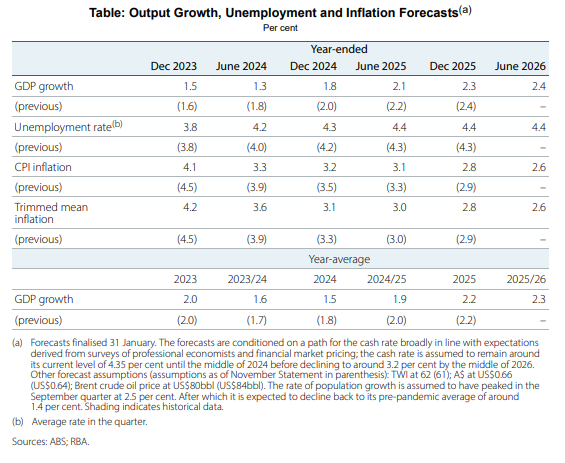
The RBA also expects broader labour underutilisation to remain well below pre-pandemic levels:
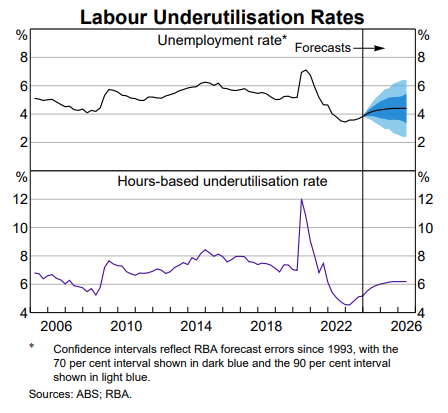
The RBA’s benign unemployment forecast is curious given Australia needs to create around 35,000 jobs per month just to keep the unemployment rate steady (assuming a stable participation rate):

With the economy mired in a per capita recession amid high interest rates and the collapse in consumer demand, jobs growth will likely remain soft.
Indeed, the latest data from SEEK contradicts the RBA’s bullishness.
The number of job ads has fallen to around pre-pandemic levels, whereas the number of applicants per job ad has soared well above historical levels:
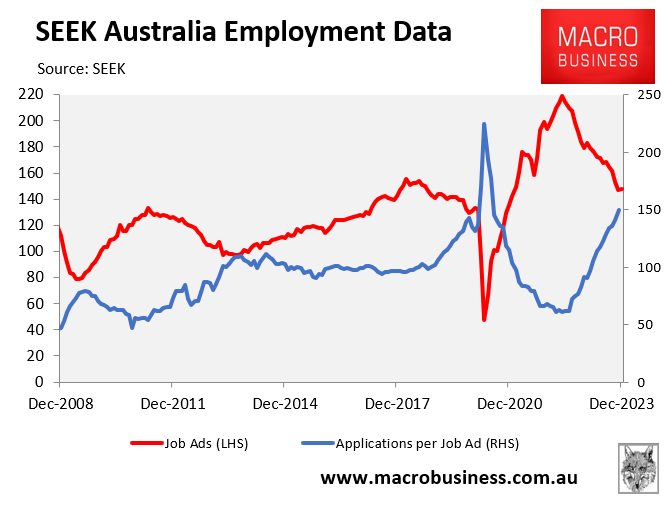
This surge in applicants per job ad, which reflects the combination of lower demand from employers and surging labour supply from net overseas migration, suggests that Australia’s unemployment rate will rise significantly in 2024:
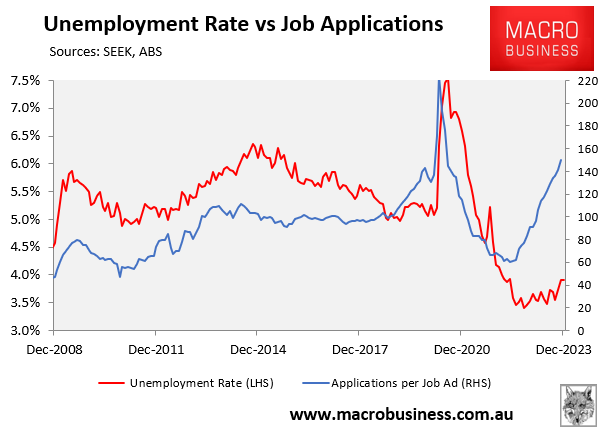
The RBA SoMP also shows a severe deterioration in forward-looking employment indicators, namely employment intentions, the vacancies-to-unemployment ratio, firms reporting labour constraints, etc:
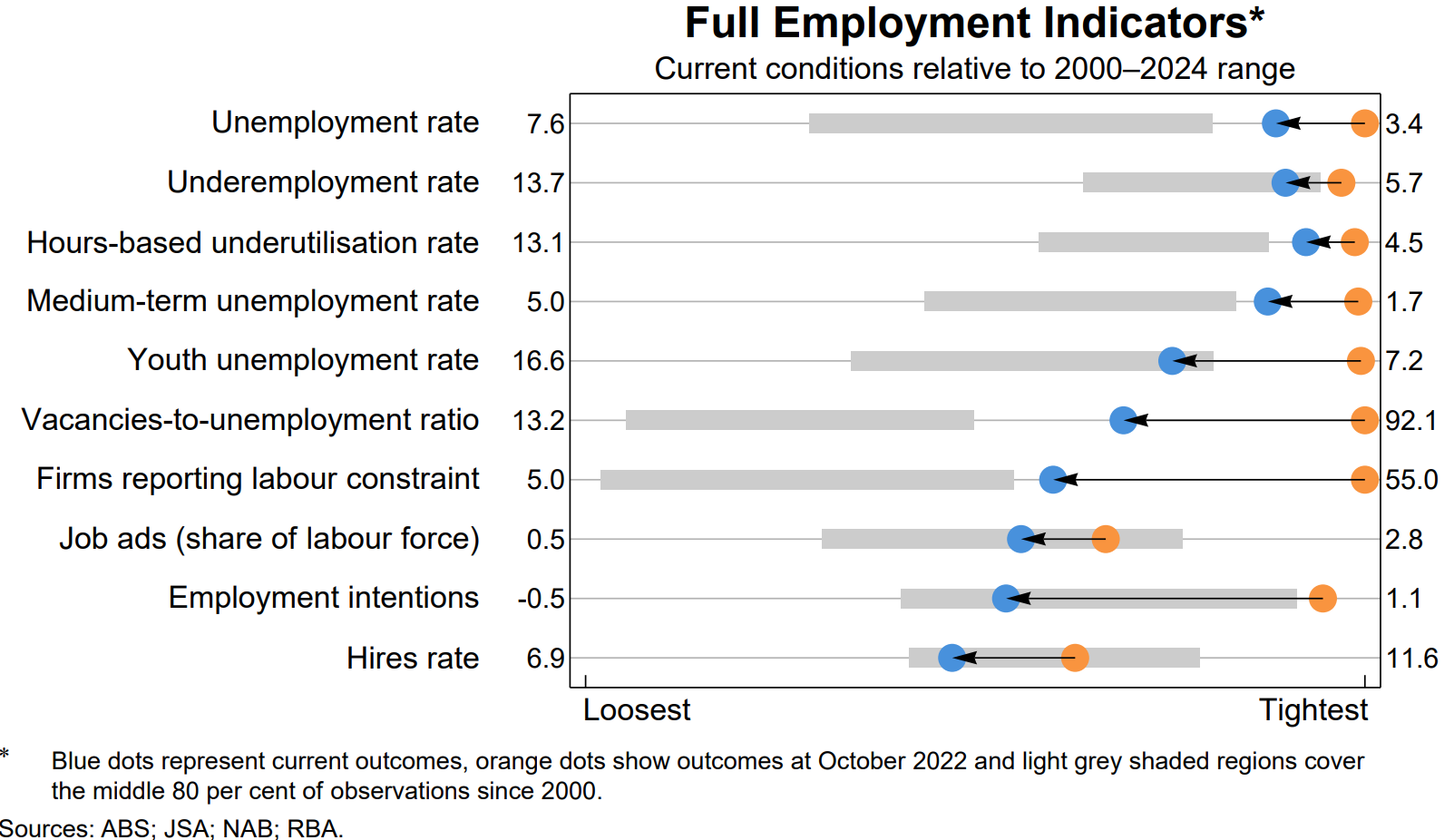
I predict that Australia’s unemployment rate will end the year close to 5%.
In turn, wage growth will slow, and the RBA will be forced to cut rates in the second half.

